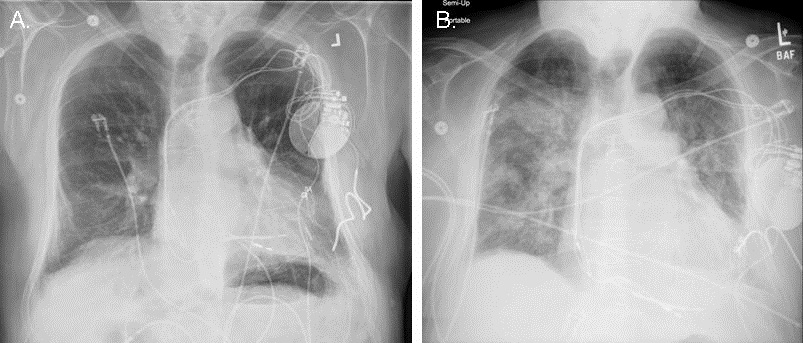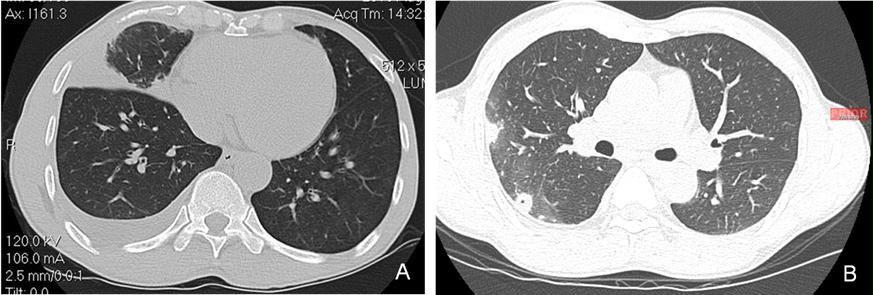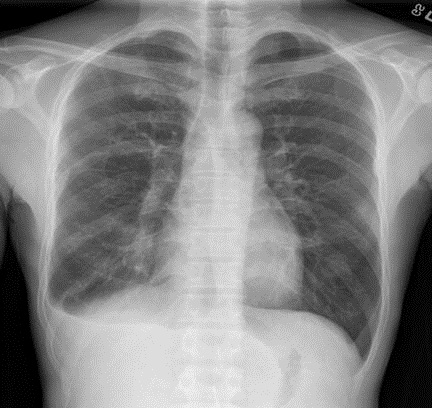Jessica Hurley, MD1
Richard D. Gerkin, MD1
Bonnie Fahy, RN, MN2
Richard A. Robbins, MD2*
Good Samaritan Regional Medical Center1 and the Phoenix Pulmonary and Critical Care Research and Education Foundation2, Phoenix, AZ
Abstract
Background
Chronic obstructive pulmonary disease (COPD) is a common disease frequently associated with high use of health services. Self-management education is a term applied to programs aimed at teaching patients skills that promote the self-efficacy needed to carry out medical regimens specific to control their disease. In COPD, the value of self-management education is not yet clear and a recent trial was terminated early because of excess mortality in the intervention group.
Objectives
The objective of this meta-analysis was to assess the settings, methods and efficacy of COPD self-management education programs on patient outcomes and healthcare utilization.
Selection criteria
Randomized controlled trials of self-management education in patients with COPD were identified. Studies focusing primarily on comprehensive pulmonary rehabilitation (education and exercise) and studies without usual care as a control group were excluded.
Search strategy
We searched PubMed (January 1985 to May 2012) as well as other meta-analysis and reviews.
Data collection and analysis
Two reviewers (JH and RAR) independently assessed study quality and extracted data. Investigators were contacted for additional information.
Main results
The reviewers included 3 group comparisons drawn from 12 trials. The studies showed no significant change in mortality, with one study being an outlier compared to the others. However, the meta-analysis revealed a reduction in the probability of hospital admission among patients receiving self-management education compared to those receiving usual care.
Conclusions
It is likely that self-management education is associated with a reduction in hospital admissions with no change in mortality. However, because of heterogeneity in interventions, study populations, follow-up time, and outcome measures, data are still insufficient to formulate clear recommendations regarding the preferred curriculum and delivery method of self-management education programs in COPD.
Introduction
Chronic obstructive pulmonary disease (COPD) is currently the third leading cause of death and the only one of the top 5 causes of death that is increasing (1). The economic and social burden of the disease is immense. The patient usually suffers progressive disability with frequent hospitalizations and emergency room visits. Hospitalizations and emergency room visits account for much of the health care costs from COPD, and therefore, strategies to decrease the these outcomes have received considerable attention (2,3).
One strategy to improve COPD care has been self-management education, a term applied to any formalized patient education program aimed at increasing knowledge and teaching skills that increase self-efficacy, thus improving collaboration with their healthcare provider to optimally manage patient care. Similar strategies have been successful in other chronic diseases (4-6). However, the effects of self-management programs in COPD, although encouraging, are still unclear (7). Furthermore, a recent trial was terminated prior to enrollment of the planned number of subjects because of excess mortality in the intervention group receiving self-management education (8).
Prompted by the surprising result of an increase in mortality, we reexamined health care outcomes for COPD self-management education by meta-analysis. We found no significant change in mortality but significant reductions in hospitalizations.
Methods
Criteria for considering studies for this review
Types of Studies: Only randomized controlled trials evaluating the effect of self-management education on patients with COPD were used. Every study included some form of patient education that addressed COPD disease self-management. For inclusion, the study must also include a control group that received usual care and were excluded from the interventional self-management education. Studies prior to 1985 were not included since medical management for COPD differed from current practice guidelines.
Types of study participants: Only patients with a clinical diagnosis with COPD were included. Spirometry was not required to be reported in the study to determine the diagnosis of COPD if the patients admitted had previously been diagnosed with COPD by the referring physician. Patients with a sole diagnosis of asthma or reactive airway disease were excluded from this review.
Types of interventions: In order to qualify as an intervention, the primary goal of the study had to center on improving the patient’s fundamental knowledge and understanding of the disease process and self-management of COPD. The methods of information delivery were highly variable and included written, verbal, visual, and/or audio communication.
Types of outcomes measured: The outcomes identified in studies that were included in this review include mortality, hospital admissions, and emergency room visits.
Search methods
Two separate reviewers (JH, RAR) used systematic searches via the information databases including PubMed. The terms used to search included “COPD” in addition to one of the following words or phrases: “educat*” or “education” or “patient-educat*” or “patient-education” or “patient educat*” or “patient-education” or “self-manag*” or “self-management” or “self manag*” or “self management” or “disease manag*” or “disease management”. The searches are current through May of 2012.
Data collection and analysis
Selection of studies: The two reviewers placed successfully retrieved articles using the above search criteria into 3 categories:
- Include: RCT evaluating COPD patients and self-management education versus usual care
- Possibly Include: RCT evaluating COPD patients and disease education but more information needed beyond what is available in the abstract
- Exclude: not an RCT, not focused on self-management of COPD or did not include usual care comparison or primary outcome focused solely on pulmonary rehabilitation
Data extraction: Information from the accepted studies was collected and included: number of patients in the control and interventional groups, type of intervention used (i.e. disease education, medication instructions, pharmacy action plans), length of study until primary outcome, mortality of each group, respiratory-related hospital admissions, and respiratory-related ED visits.
Data analysis:
Publication bias: Funnel plots were constructed to examine the pattern of study effects by study size. Outliers on the plot with respect to a 95% confidence interval were also determined.
Assessment of heterogeneity: The I square statistic was used to examine variability in study results. If I square was greater than 20%, sensitivity analysis was conducted to determine, if possible, the source of heterogeneity.
Data synthesis: Continuous outcomes were analyzed using weighted mean difference with 95% confidence intervals. For dichotomous outcomes, a pooled odds ratio was used. A fixed effects model was used if I square was less than 20%. A random effects model, using the technique of DerSimonian and Laird (20), was used if I square was greater than 20 %.
RevMan 5.1. (Copenhagen: The Nordic Cochrane Centre, The Cochrane Collaboration, 2011) was used for the analysis.
Results
Results of the search: Searches identified 1904 titles and abstracts that were screened to identify 71 potentially relevant articles about self-management education in COPD. Full-text versions of these papers were obtained, and independently assessed by two reviewers (JH and RAR). These were searched for data on mortality, hospitalizations and emergency room (ER) visits. A total of 12 trials were identified which met the review entry criteria (8-19).
Subjects: A total of 2476 patients were randomized in the 12 studies. The studies were heterogenous with some recruiting patients from outpatient clinics, some from general practice, some from inpatient hospital admissions for COPD exacerbations and some from several sources.
Interventions: All 12 studies described COPD self-management education compared with usual care. The educational delivery mode consisted of group education or individual education. Educational topics varied, as did the discipline of the provider. The follow-up time was variable ranging from 2-12 months.
Comparisons: Twelve studies that compared self-management education with usual care have been included in this review. In one study two intervention groups and one usual care group were used (11). The intervention groups were considered sufficiently similar to be combined.
Outcomes: Reported outcome categories were variable. Studies included in the review identified mortality (10 studies), respiratory-related hospital admissions (9 studies) and emergency room (ER) visits (4 studies).
Missing data: Additional data was requested from the two most recent studies (8,9). A reply was received from one author and is listed in the acknowledgement section.
Mortality: Ten studies reporting mortality were included in the meta-analysis (8-15,18,19). There was no significant difference in mortality between the usual care and intervention groups (OR 0.76; 95% CI (0.44 to 1.30); Figure 1; p=0.31).

Figure 1. Forest plot of mortality
The level of statistical heterogeneity for this outcome (I square = 54%) may be related to the outlying effect from the report by Fan et al. (8), since its removal led to a lower I square statistic (0%). Also removal of the study resulted in a statistically significant improvement in mortality rate (OR 0.64; 95% CI 0.46 to 0.90)
Respiratory-related Hospital admissions: Nine studies reporting COPD-related hospital admissions were included in the meta-analysis (8-11,13-16,18). There was little heterogeneity present (I square = 0%). There was a clinically and statistically significant reduction of the probability of at least one hospital admission among patients receiving self-management education compared to those receiving usual care (OR 0.76; 95% CI (0.65 to 0.88); p< 0.001; Figure 2).

Figure 2. Forest plot of pulmonary hospitalization
Emergency room visits: Four trials that reported the effect of self-management education on Emergency Room (ER) visits related to COPD were included in the meta-analysis (9,11,12,17). Although the level of heterogeneity was high (I square = 83%), removal of any one study had little effect on this variability. There was no significant difference between patients receiving self-management education compared to those receiving usual care in the average number of respiratory-related emergency room visits (Mean difference 0.12/pt-yr; 95% CI (-0.21 to 0.46): p=0.47; Figure 3).

Figure 3. Forest plot of pulmonary emergency room visits/pt-yr.
Discussion
This meta-analysis systematically evaluated comparisons of self-management education for patients with COPD compared to usual care. The review was prompted by a recent report of increased mortality in patients receiving COPD education (8). Meta-analysis did not confirm an increase in mortality and determined the recent study had significant heterogeneity compared to the other studies. We confirm a previous meta-analysis which demonstrated a significant decrease in COPD-related hospitalizations in the intervention groups (7).
Self-management education has been successfully utilized in a number of chronic diseases (4-6). Education including the use of pre-defined action plans may lead to faster and more frequent treatment of COPD exacerbations, thus resulting in the reduction in hospitalizations. Although we did not review cost-effectiveness, hospitalizations represent the major cost of COPD care (2,3). Therefore, self-management education is likely cost-effective. In support of this concept, a recent cost-effective analysis of one successful self-management education program revealed an average cost savings of $593 per patient (21).
This review has a number of limitations. First, there was variation in the intervention content and delivery. Some studies included action plans in the self-management curriculum and others incorporated additional components of pulmonary rehabilitation including exercise. The type and intensity of education delivery varied from one-on-one instruction, group interaction and the distribution of written material.
Second, the COPD-population was defined in varying detail, with studies using very diverse inclusion criteria. As a result, heterogeneity in disease severity was present. This may explain some of the differing results, including the increase in mortality observed in the recently published study (8).
Third, the studies assessed a broad spectrum of outcome measures and length of follow-up. Often meta-analyses could not be performed because of different outcome measures utilized or different methodology used to calculate the same outcome (e.g. ER visits). This lack of data consistency hampered statistical combination and therefore may have biased the estimates in the review. Since self-management programs are intended to achieve behavioral changes, follow-up should ideally be long term and this was not the case in all studies.
The final limitation was that knowledge of one’s disease does not necessarily lead to behavioral change. It is unclear at this point if the educational programs lead to an increase in healthy behaviors.
The results of the study by Fan et al. (8) showing an increase in mortality is not confirmed by this meta-analysis. Fan’s manuscript describes the BREATH trial which was a randomized, controlled, multi-center trial performed at 20 VA medical centers comparing an educational comprehensive care management program to guideline-based usual care for patients with chronic obstructive pulmonary disease. The intervention included COPD education during 4 individual and 1 group sessions, an action plan for identification and treatment of exacerbations, and scheduled proactive telephone calls for case management. It is unclear why this education and self-management which is not very dissimilar from other studies would increase mortality. Although the patients were recruited after they were hospitalized, and therefore, likely had more advanced COPD than in some other studies, this alone should not explain excess mortality in the intervention group. An accompanying editorial by Pocock in the same issue of the Annals of Internal Medicine identified no apparent reason for the increase in mortality and points out that education seems an unlikely cause (22). We also have been unable to identify an explanation for the increase and agree with Pocock that the reason seems most likely secondary to statistical chance. The present meta-analysis is consistent with this concept.
For future research of the efficacy of self-management education of COPD patients in improving patient outcomes and decreasing health care utilization, it is important to create more homogeneity in the design of the studies (educational curriculum, demographics, outcome measures and follow-up period). The effectiveness of the individual components of self-management education programs (i.e., action plans, exercise programs) should also be evaluated.
From this meta-analysis, we have shown that self-management education is associated with a reduction in hospital admissions, with no indication for detrimental effects in other outcome parameters. This would seem sufficient to justify a recommendation of self-management education in COPD. However, due to diversity in interventions, study populations, follow-up time, and outcome measures, data are still insufficient to formulate clear recommendations regarding the form and content of self-management education programs in COPD.
Acknowledgements
We are grateful to Kathryn Rice for her assistance in obtaining additional data from her study (9).
References
- Akinbami LJ, Liu X. Chronic obstructive pulmonary disease among adults aged 18 and over in the United States, 1998-2009. NCHS Data Brief 2011;63:1-8.
- Toy EL, Gallagher KF, Stanley EL, Swensen AR, Duh MS. The economic impact of exacerbations of chronic obstructive pulmonary disease and exacerbation definition: a review. COPD 2010;7:214-28.
- Hilleman DE, Dewan N, Malesker M, Friedman M. Pharmacoeconomic evaluation of COPD. Chest 2000;118:1278-85.
- Ofman JJ, Badamgarav E, Henning JM, Knight K, Gano AD, Jr., Levan RK, et al. Does disease management improve clinical and economic outcomes in patients with chronic diseases? A systematic review. Am J Med 2004;117:182-92.
- Gwadry-Sridhar FH, Flintoft V, Lee DS, Lee H, Guyatt GH. A systematic review and meta-analysis of studies comparing readmission rates and mortality rates in patients with heart failure. Arch Intern Med 2004;164:2315-20.
- Jovicic A, Holroyd-Leduc JM, Straus SE. Effects of self-management intervention on health outcomes of patients with heart failure: a systematic review of randomized controlled trials. BMC Cardiovasc Disord 2006;6:43.
- Effing T, Monninkhof EM, van der Valk PD, van der Palen J, van Herwaarden CL, Partidge MR, Walters EH, Zielhuis GA. Self-management education for patients with chronic obstructive pulmonary disease. Cochrane Database Syst Rev 2007;17:CD002990.
- Fan VS, Gaziano JM, Lew R, et al. A comprehensive care management program to prevent chronic obstructive pulmonary disease hospitalizations: a randomized, controlled trial. Ann Intern Med 2012;156:673-83.
- Rice KL, Dewan N, Bloomfield HE, Grill J, Schult TM, Nelson DB, Kumari S, Thomas M, Geist LJ, Beaner C, Caldwell M, Niewoehner DE. Disease management program for chronic obstructive pulmonary disease: a randomized controlled trial. Am J Respir Crit Care Med. 2010;182:890-6.
- Boxall A, Barclay L, Sayers A, Caplan GA. Managing chronic obstructive pulmonary disease in the community. A randomized controlled trial of home-based pulmonary rehabilitation for elderly housebound patients. J Cardiopulm Rehabil 2005;25:378–85.
- Coultas D, Frederick J, Barnett B, Singh G, Wludyka P. A randomized trial of two types of nurse-assisted home care for patients with COPD. Chest 2005;128:2017–24.
- Martin IR, McNamara D, Sutherland FR, Tilyard MW, Taylor DR. Care plans for acutely deteriorating COPD: a randomized controlled trial. Chronic Respiratory Disease 2004;1:191–5.
- Rea H, McAuley S, Stewart A, Lamont C, Roseman P, Didsbury P. A chronic disease management programme can reduce days in hospital for patients with chronic obstructive pulmonary disease. Intern Med J 2004;34:608–14.
- Bourbeau J, Julien M, Maltais F, et al. Reduction of hospital utilization in patients with chronic obstructive pulmonary disease: a disease specific self-management intervention. Arch Intern Med 2003;163:585–91.
- Monninkhof E, van der Valk P, van der Palen J, van Herwaarden C, Zielhuis G. Effects of a comprehensive self-management programme in patients with chronic obstructive pulmonary disease. Eur Respir J 2003;22:815–20.
- Gallefoss F, Bakke PS, Rsgaard PK. Quality of life assessment after patient education in a randomized controlled study on asthma and chronic obstructive pulmonary disease. Am J Respir Critical Care Med 1999;159:812–7.
- Gourley GA, Portner TS, Gourley DR, et al. Humanistic outcomes in the hypertension and COPD arms of a multicenter outcomes study. J Am Pharm Assoc 1998;38:586–597.
- Littlejohns P, Baveystock CM, Parnell H, Jones P. Randomised controlled trial of the effectiveness of a respiratory health worker in reducing impairment, disability, and handicap due to chronic airflow limitation. Thorax 1991;46:559–64.
- Cockcroft A, Bagnall P, Heslop A, et al.Controlled trial of respiratory health worker visiting patients with chronic respiratory disability. BMJ (Clin Res Ed) 1987;294:225–8.
- DerSimonian R, Laird N. Meta-analysis in clinical trials. Control Clin Trials 1986;7:177-88.
- Dewan NA, Rice KL, Caldwell M, Hilleman DE. Economic evaluation of a disease management program for chronic obstructive pulmonary disease. COPD 2011;8:153-9.
- Pocock SJ. Ethical dilemmas and malfunctions in clinical trials research. Ann Intern Med 2012;156:746-747.
Reference as: Hurley J, Gerkin RD, Fahy B, Robbins RA. Meta-analysis of self-management education for patients with chronic obstructive pulmonary disease. Southwest J Pulm Crit Care 2012;4:194-202. (Click here for a PDF version of the manuscript)
For the accompanying editorial "A Little Knowledge is a Dangerous Thing" click here.
 Sunday, July 1, 2012 at 8:57AM
Sunday, July 1, 2012 at 8:57AM 






